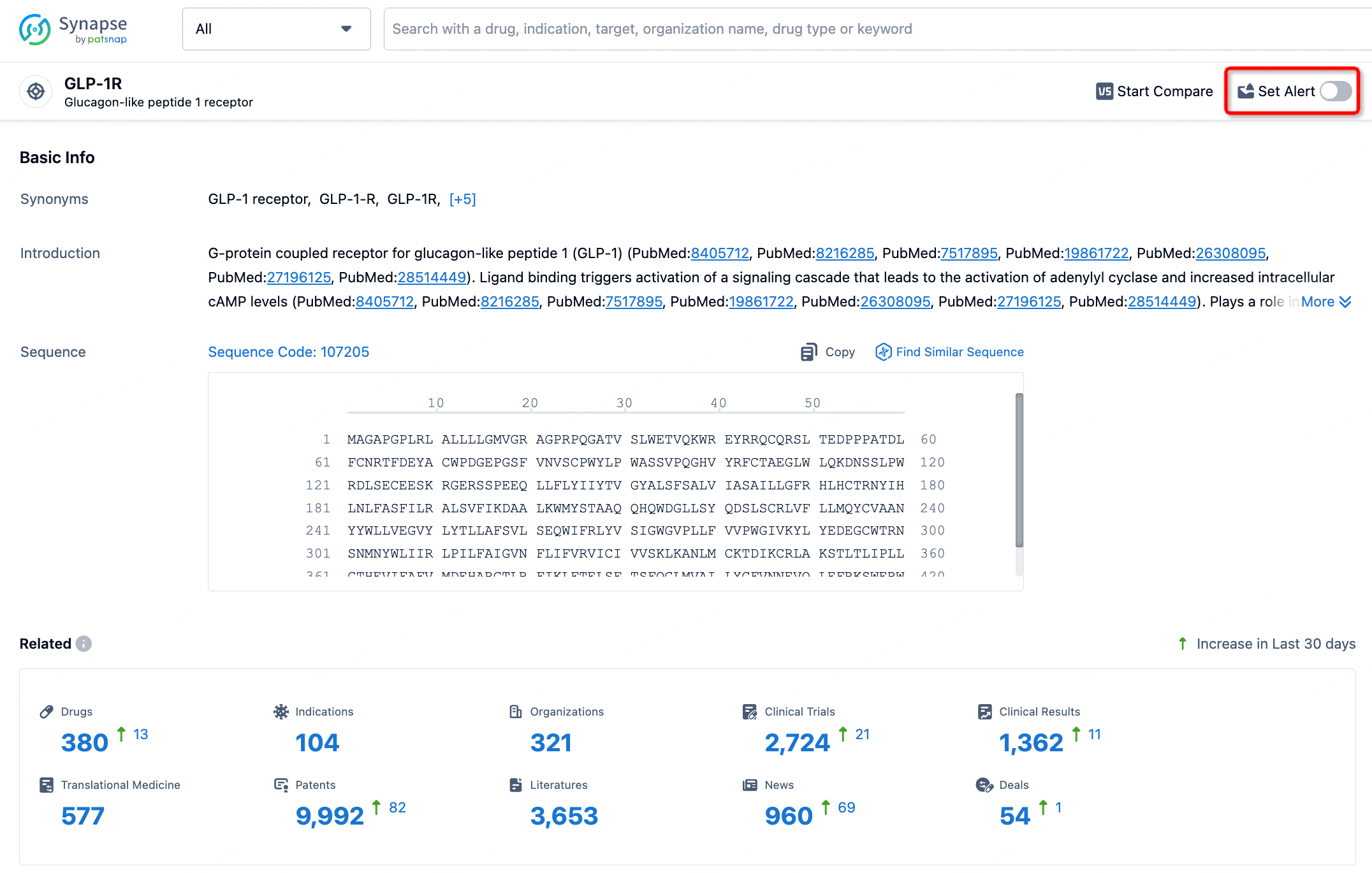Request Demo
What are ADCY1 inhibitors and how do they work?
25 June 2024
Adenylyl cyclases (ADCYs) are a family of enzymes critical to the regulation of intracellular cyclic adenosine monophosphate (cAMP) levels, which play an essential role in numerous physiological processes. Among the various isoforms of adenylyl cyclase, ADCY1 has garnered increasing interest in recent years, especially in the realm of pharmacology. This article aims to provide an in-depth look at ADCY1 inhibitors, shedding light on their working mechanisms, therapeutic applications, and potential future directions.
ADCY1, one of the nine membrane-bound isoforms of adenylyl cyclase, is primarily expressed in the brain. It plays a crucial role in neuronal signaling by converting ATP to cAMP, a second messenger critical for signal transduction pathways. The enzyme is activated by calcium/calmodulin and is involved in several neuronal processes, such as synaptic plasticity, learning, and memory. Dysregulation of ADCY1 activity has been linked to various neurological conditions, which has spurred interest in developing specific inhibitors for this enzyme.
ADCY1 inhibitors are a class of compounds designed to selectively inhibit the activity of the ADCY1 isoform. These inhibitors generally fall into two broad categories: competitive and non-competitive. Competitive inhibitors bind to the active site of the enzyme, thereby preventing ATP from accessing it. Non-competitive inhibitors, on the other hand, bind to a different site on the enzyme, which induces a conformational change that reduces its activity.
One of the key challenges in developing ADCY1 inhibitors is achieving selectivity. Given that there are nine different isoforms of adenylyl cyclase, ensuring that an inhibitor specifically targets ADCY1 without affecting other isoforms is critical to minimizing off-target effects. Advances in high-throughput screening techniques and rational drug design have facilitated the identification of small molecules with high specificity for ADCY1.
The therapeutic potential of ADCY1 inhibitors is particularly promising in the field of neurology. Given that ADCY1 is predominantly expressed in the brain and is involved in critical neuronal functions, its dysregulation has been implicated in several neurological and psychiatric disorders. For instance, elevated levels of cAMP due to overactive ADCY1 have been associated with conditions such as neuropathic pain, epilepsy, and certain forms of cognitive impairment.
In the context of neuropathic pain, excessive cAMP production can lead to abnormal neuronal excitability and sensitization, contributing to chronic pain states. Preclinical studies have demonstrated that ADCY1 inhibitors can effectively reduce cAMP levels in affected neurons, thereby alleviating pain symptoms. This points to their potential as a novel class of analgesics, especially for patients who do not respond well to conventional pain management therapies.
Epilepsy is another area where ADCY1 inhibitors show significant promise. Abnormal cAMP signaling has been implicated in seizure activity, and targeting ADCY1 could offer a new avenue for anticonvulsant therapy. Experimental models have shown that inhibiting ADCY1 can reduce seizure frequency and severity, highlighting the potential of these inhibitors to complement existing treatment regimens.
Cognitive disorders, including certain types of intellectual disabilities and age-related cognitive decline, have also been linked to dysregulated cAMP signaling. While the exact mechanisms are still under investigation, preliminary research suggests that modulating ADCY1 activity could help restore normal synaptic function and improve cognitive outcomes.
In addition to their potential applications in neurology, ADCY1 inhibitors are also being explored for their role in other physiological systems. For example, cAMP is involved in immune responses, and modulating ADCY1 activity could have implications for inflammatory diseases and autoimmune conditions. Moreover, the potential cardioprotective effects of ADCY1 inhibitors are being investigated, given the role of cAMP in cardiac function.
In conclusion, ADCY1 inhibitors represent a burgeoning area of research with significant therapeutic potential. By specifically targeting the ADCY1 isoform, these inhibitors offer the promise of novel treatments for a range of neurological and potentially other systemic conditions. As research progresses, further understanding of their mechanisms and broader applications could pave the way for innovative therapies that address unmet medical needs.
ADCY1, one of the nine membrane-bound isoforms of adenylyl cyclase, is primarily expressed in the brain. It plays a crucial role in neuronal signaling by converting ATP to cAMP, a second messenger critical for signal transduction pathways. The enzyme is activated by calcium/calmodulin and is involved in several neuronal processes, such as synaptic plasticity, learning, and memory. Dysregulation of ADCY1 activity has been linked to various neurological conditions, which has spurred interest in developing specific inhibitors for this enzyme.
ADCY1 inhibitors are a class of compounds designed to selectively inhibit the activity of the ADCY1 isoform. These inhibitors generally fall into two broad categories: competitive and non-competitive. Competitive inhibitors bind to the active site of the enzyme, thereby preventing ATP from accessing it. Non-competitive inhibitors, on the other hand, bind to a different site on the enzyme, which induces a conformational change that reduces its activity.
One of the key challenges in developing ADCY1 inhibitors is achieving selectivity. Given that there are nine different isoforms of adenylyl cyclase, ensuring that an inhibitor specifically targets ADCY1 without affecting other isoforms is critical to minimizing off-target effects. Advances in high-throughput screening techniques and rational drug design have facilitated the identification of small molecules with high specificity for ADCY1.
The therapeutic potential of ADCY1 inhibitors is particularly promising in the field of neurology. Given that ADCY1 is predominantly expressed in the brain and is involved in critical neuronal functions, its dysregulation has been implicated in several neurological and psychiatric disorders. For instance, elevated levels of cAMP due to overactive ADCY1 have been associated with conditions such as neuropathic pain, epilepsy, and certain forms of cognitive impairment.
In the context of neuropathic pain, excessive cAMP production can lead to abnormal neuronal excitability and sensitization, contributing to chronic pain states. Preclinical studies have demonstrated that ADCY1 inhibitors can effectively reduce cAMP levels in affected neurons, thereby alleviating pain symptoms. This points to their potential as a novel class of analgesics, especially for patients who do not respond well to conventional pain management therapies.
Epilepsy is another area where ADCY1 inhibitors show significant promise. Abnormal cAMP signaling has been implicated in seizure activity, and targeting ADCY1 could offer a new avenue for anticonvulsant therapy. Experimental models have shown that inhibiting ADCY1 can reduce seizure frequency and severity, highlighting the potential of these inhibitors to complement existing treatment regimens.
Cognitive disorders, including certain types of intellectual disabilities and age-related cognitive decline, have also been linked to dysregulated cAMP signaling. While the exact mechanisms are still under investigation, preliminary research suggests that modulating ADCY1 activity could help restore normal synaptic function and improve cognitive outcomes.
In addition to their potential applications in neurology, ADCY1 inhibitors are also being explored for their role in other physiological systems. For example, cAMP is involved in immune responses, and modulating ADCY1 activity could have implications for inflammatory diseases and autoimmune conditions. Moreover, the potential cardioprotective effects of ADCY1 inhibitors are being investigated, given the role of cAMP in cardiac function.
In conclusion, ADCY1 inhibitors represent a burgeoning area of research with significant therapeutic potential. By specifically targeting the ADCY1 isoform, these inhibitors offer the promise of novel treatments for a range of neurological and potentially other systemic conditions. As research progresses, further understanding of their mechanisms and broader applications could pave the way for innovative therapies that address unmet medical needs.
How to obtain the latest development progress of all targets?
In the Synapse database, you can stay updated on the latest research and development advances of all targets. This service is accessible anytime and anywhere, with updates available daily or weekly. Use the "Set Alert" function to stay informed. Click on the image below to embark on a brand new journey of drug discovery!
AI Agents Built for Biopharma Breakthroughs
Accelerate discovery. Empower decisions. Transform outcomes.
Get started for free today!
Accelerate Strategic R&D decision making with Synapse, PatSnap’s AI-powered Connected Innovation Intelligence Platform Built for Life Sciences Professionals.
Start your data trial now!
Synapse data is also accessible to external entities via APIs or data packages. Empower better decisions with the latest in pharmaceutical intelligence.


